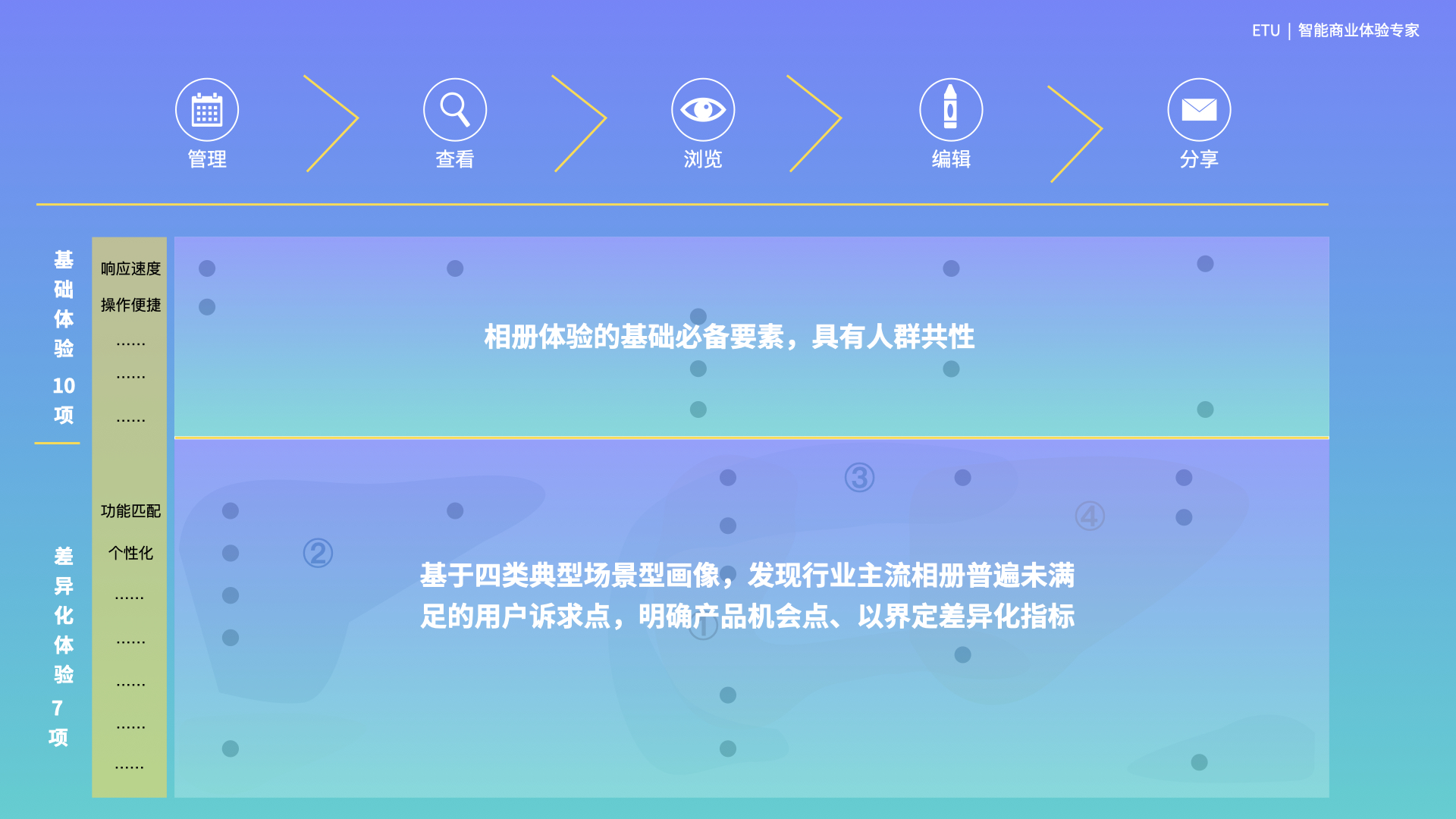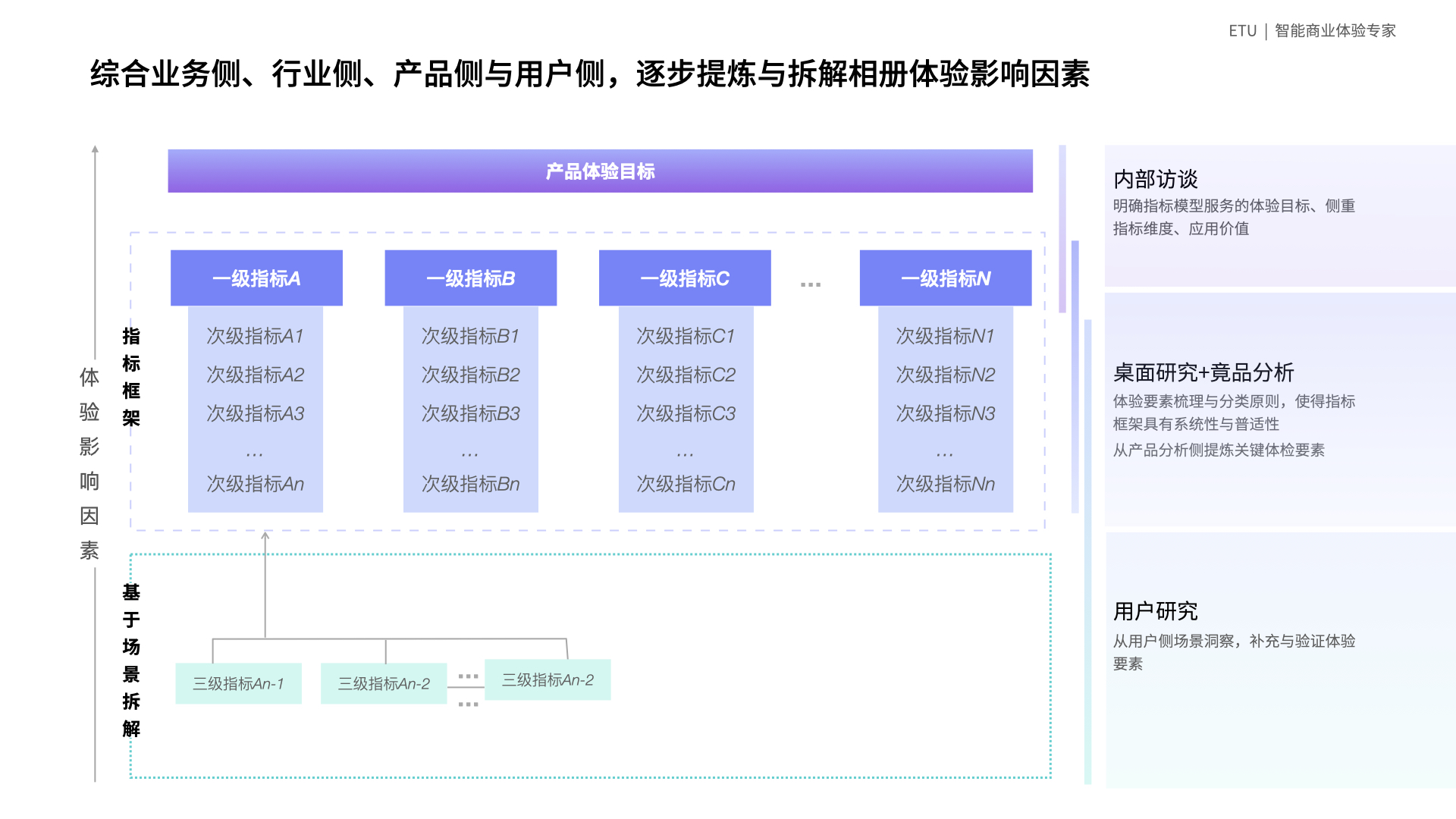-
 Ting Zhang
ETU Design
Vice President of Research
Ting Zhang
ETU Design
Vice President of Research
Doctor of Engineering, Chiba University, Japan. With 14 years of experience in enterprise service projects, he is deeply involved in user experience research in the fields of finance, securities, logistics, intelligent devices, etc.
He specializes in thinking from macro and micro perspectives, the whole value chain of products and different stakeholders, and uses various research methodologies such as qualitative, quantitative and data analysis to provide user experience diagnosis and solutions for enterprises.
Design Perspective: Empowering design value with structured thinking.
Digital Customer Experience Management: Experience Indicator system for Sustainable Innovation Empowering
In the face of the increasing scale of users and diverse feedback channels, traditional user experience research methods face many challenges: long research cycles, inability to make efficient and agile responses; poor results from experience insights to actual business implementation; a gap between user experience enhancement and business growth ...... In the context of digital transformation, experience management In the context of digital transformation, experience management also needs to be based on data-driven experience insights, real-time experience monitoring of the whole journey and omnichannel, as well as combining the functions of different roles and management processes and mechanisms to agree on business team goals and efficiently drive business implementation.
This workshop will share ETU's years of experience monitoring and management experience methodology and answer the question "How to use quantifiable experience metrics to help improve products and services under the trend of digital experience management? We will combine our experience in building customised and real-time metrics monitoring systems for different products and services on the B and C side in recent years, to help experience researchers and managers, product design and business teams to grasp quantitative experience management thinking, metrics building methods and processes, to agilely guide business optimisation and innovation, and to ultimately enable business growth.
The workshop will cover the following topics
1. Experience management status and trends
1.1 The value of experience management to corporate strategy, management and execution
1.2 Challenges for companies in experience enhancement and management
1.3 Digital transformation of experience management
2、The idea of index system and method tools
2.1 Common experience indicators and models: *NPS, *CSAT, *Google HEART model
2.2 Principles for the establishment of indicator systems
2.3 Diagnosis of the experience management of enterprises and the experience status of products and services
2.4 Decomposition and definition of experience indicators based on scenario journeys
2.5 Deepening and consensus on the indicator system with the help of user portraits and product scenario co-creation tools
3. Acquisition and analysis of metrics data
3.1 Experience perception data and experience state data
3.2 Different methods of acquiring subjective and objective data
3.3 Indicator weighting and optimization priority analysis
4、Application scenarios of the indicator system
4.1 Application of the indicator system in experience warning
4.2 Application of the indicator system in experience optimisation and innovation
5、Quantitative management of digitally empowered experience
5.1 Real-time experience monitoring of the whole journey and all channels
5.2 Management process mechanism from experience monitoring to action
5.3 Combining user profile data to accurately optimise product services and operations
Cases will be cited.
1. User experience data index system of the B-side IT system of a logistics enterprise - real-time experience quantification and monitoring based on data platform
2. user satisfaction index system of B-side IT system of a logistics enterprise - a real-time monitoring and early warning experience management system
2. C-side functional index system of an intelligent equipment enterprise - enabling product base experience optimization and differentiated competitiveness construction
Note
NPS: Net recommendation value is an index that measures the likelihood that a customer will recommend a company or service to others
CSAT: Customer Satisfaction is a very simple and effective indicator of customer experience.
Google HEART: A model for evaluating and improving user experience, consisting of five dimensions: delight, engagement, acceptance, retention, and task completion
1、Workshop presentation: Experience management under digital transformation
2、Theoretical explanation
3、Case Study: Customised metrics system for B- and C-side products and services
4、Group practice: building a user journey-based metrics system and managing experience alerts
5、Open Q&A: Free flowing Q & A session
1、User researcher, experience management related staff
2、Product Manager, Experience Designer related practitioner
3、Product Operations, Marketing related practitioners
1、Knowledge of methods and tools for building indicator systems from 0 to 1
2、Customised experience metrics for your business objectives and product characteristics
3、Hands-on experience in driving experience insights into the business with the "quantitative experience management" tool
-
 A system of functional indicators for C-suite smart devices
A system of functional indicators for C-suite smart devices
-
 B-side IT system experience data metrics system
B-side IT system experience data metrics system
-
 Two types of experience data in the indicator system
Two types of experience data in the indicator system
-
 Research methods in indicator modelling
Research methods in indicator modelling








